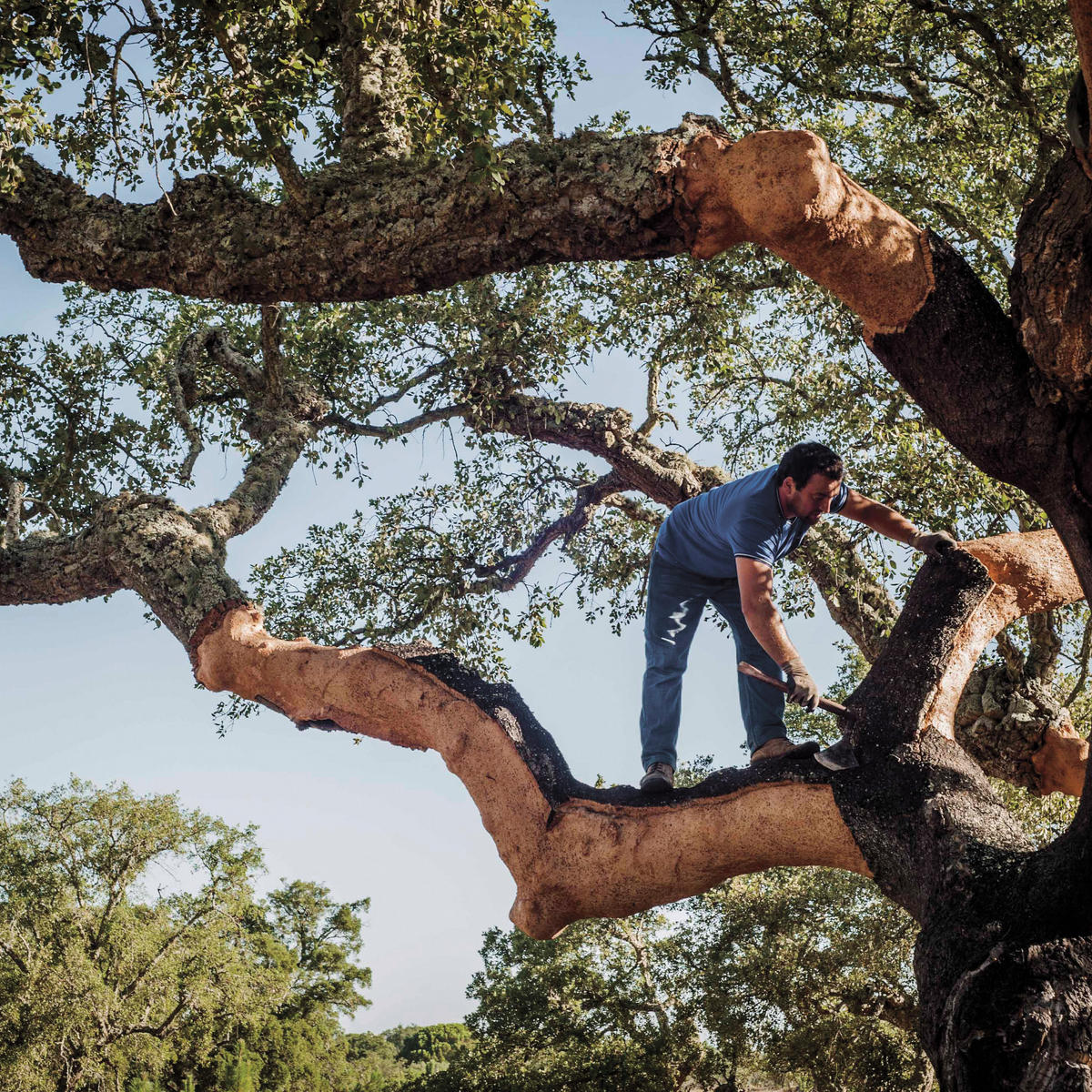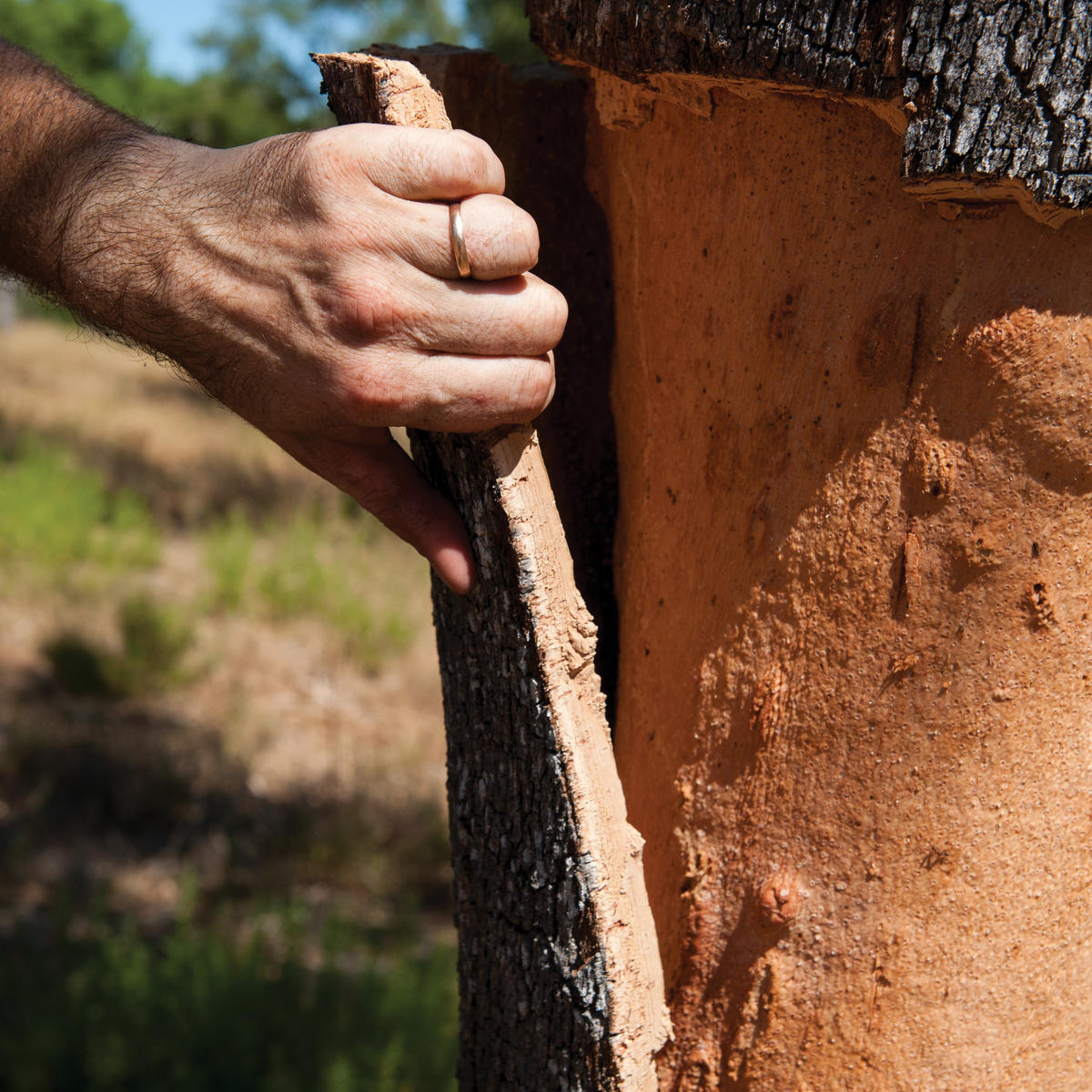Natural cork: the unsung hero
Author: Adam Holden

Carbon negative, recyclable, natural – not to mention the best possible closure for fine wine – there are countless reasons to love cork. Here, Adam Holden tells us more about why pulling a natural cork from a delicious bottle is a small, but important, step towards sustainability.
Wine and cork have long been bedfellows. In the ancient world, the Greeks and Romans used cork stoppers to protect wine stored in clay amphorae. It’s light, flexible and impermeable – which means it’s also slow to decay. No surprise, then, that this millennia-old technology is still the preferred way to preserve and protect fine wines as they gently mature.
What is cork taint?
The story of cork has not always been one of success. In the 1980s and ’90s, a surge in cork taint – caused by malevolent compound 2,4,6-Trichloroanisole (TCA) – forced producers to look for alternative closures. So potent is TCA that even miniscule amounts on a cork can give wine an unpleasant, wet-cardboard-like aroma.
Understandably, the cork industry went to great efforts to combat that problem. Meanwhile, multiple alternatives emerged, from the environmentally disastrous plastic cork to the enduringly successful screwcap. Natural cork quickly lost ground.
Over the last three decades, the cork-taint situation has been steadily improving. In 2020, our cork partner Amorim perfected a steam sanitisation process which has reduced its rate of TCA infection almost to the point of elimination. This is excellent news for the 5.5 billion stoppers the company produces annually.
Does fine wine age better under cork?
There was a time when closing a cellar-worthy fine wine with anything other than a natural cork would have raised an eyebrow. Today, it’s a more nuanced debate. Technical stoppers have developed to the point where the winemaker can select their closure based on the amount of air exchange they require. Not to be outdone, cork technology has now advanced in the same way.
Regardless of how far technology can take us, cork’s natural ability to properly seal a bottle while also allowing subtle breathing to occur is hard to deny. As a bottle ages in your cellar, gentle oxidation of the tannins slowly softens the wine, building complexity. The tiny volume of oxygen ingress also helps prevent the build-up of funky aromas which come from anaerobic ageing.
Detractors will point to the fact that a natural product like cork can give unpredictable results. But today this just isn’t the case: producers of high-quality wines use impeccably produced corks. And, in any case, isn’t a tolerable degree of variety part of the joy of wine? It is, after all, an agricultural product itself.
Into the woods
Cork comes from the bark of the cork oak (Quercus suber). For most trees, stripping their bark is a sure-fire way to kill them. But the cork oak is different. It can uniquely replenish its bark, making it a truly renewable resource. This is because workers harvest the tree’s second bark layer rather than the carrier of nutrients. It can survive without it, rebuilding it over the course of a decade or so.
The harvest takes place in late summer. Considerable skill is required to avoid damaging the inner bark; usually, it’s done using hand tools. This craft is one of the best-paid agricultural jobs in the world. It’s a trade passed from generation to generation, making it economically, culturally and socially significant.

Cork forests are also one of the world’s 36 biodiversity hotspots. The UN has identified them as both biologically rich with endemic, irreplaceable plants, and also under threat. Less than 30% of their original natural vegetation remains. Among the dozens of significant species relying on this ecosystem are the endangered Iberian lynx, not to mention an enormous array of other mammals, reptiles, amphibians, birds, insects, invertebrates, other flora and fungi.
The cork trees are perfectly adapted to their environment after more than 10 million years. They place little demand on water in the arid areas where they grow. They protect against soil erosion and mitigate the threat of forest and wildfires. Cork oak’s fight against desertification is cast in powerful imagery in north Africa; it appears to stand as the final legion of defence against the advancing Sahara.
A landscape in peril
This ancient landscape is under threat: the single supreme danger to cork forests is their commercial viability. Typically, a cork tree will provide a first useable harvest when 25 years old. But it’s not until age 43 that the bark becomes sufficiently thick, and of a high enough quality, to be used for fine wine. While cork is an endlessly versatile product, the manufacture of high-quality wine stoppers is a disproportionately valuable source of revenue when compared to its other uses.
Making a living from growing and managing a cork oak forest is hard. If you were starting from scratch today, you would be making an investment for your grandchildren rather than yourself. Many farmers prefer to use their land for crops that give a faster return. Fast growing and easily monetised, non-native plants such as eucalyptus are valuable for paper pulp.
But eucalyptus doesn’t suit Portugal’s natural ecosystem. It thirstily consumes scarce groundwater, and it burns alarmingly easily – and with ferocious intensity. It also supports a fraction of the biodiversity of a cork forest. And, since the eucalyptus harvest simply means cutting the trees down, it does not support the skilled workforce as cork does.
Doing your bit
As a fine wine lover, when you buy wine with a cork closure, you’re doing your bit. And when you reach for the corkscrew, open the wine and then recycle the cork, you’re doing even more. If only all green initiatives were as simple.
Certainly, as a wine merchant we take our responsibility seriously here: by supporting cork farmers, and by favouring natural cork, we can help make cork oak a more economically viable product. In turn, this means we can help to protect and expand the vital cork forest ecosystem.
And the benefits are not only in the forest. A life cycle analysis of cork wine stoppers, commissioned by Amorim, has shown that each natural cork stopper has a CO2 balance as high as -309gr of CO2. As the trees replenish their bark, they lock up more carbon to be harvested again nine to 12 years later. One hectare of cork forest draws down nearly 15 tonnes of CO2 in a single year. A screwcap closure generates 25 times more CO2.
With growing awareness of the environment and the impact our lives have on the future of the planet, the restoration of wine producers’ and enthusiasts’ faith in cork could not come soon enough. This year, we’ve begun a project to move our Own Selection wines to 100% natural cork wherever feasible. It’s a small but important gesture – after all, mighty oaks from humble acorns grow.
Find out more about sustainability at Berry Bros. & Rudd.


